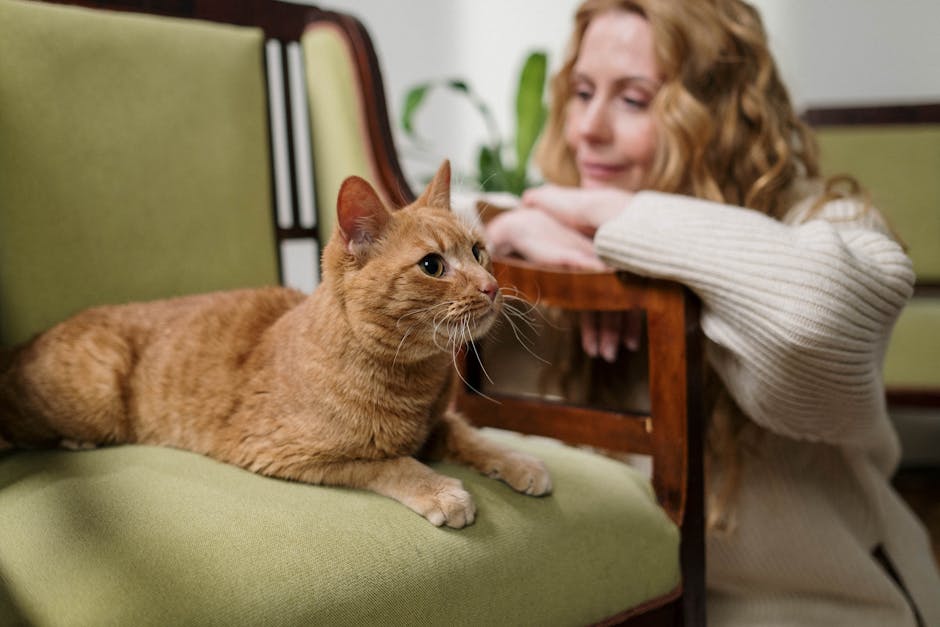Adjusting to a new home can be a daunting task for any pet, and cats are no exception. Just like humans, cats have unique personalities and temperaments, which can make the adjustment period vary from one cat to another. Understanding the process of a cat's adjustment to a new owner is essential to make the transition as smooth as possible. In this blog post, we will explore how long it takes for cats to adjust to their new owners and offer some tips to make the process successful.
Discussion of the factors that influence a cat's adjustment period, including age, personality, and previous living conditions

Cats are known for their ability to adapt, but the length of time it takes for a cat to adjust to a new owner can vary from cat to cat. There are several factors that can influence a cat's adjustment period, including age, personality, and previous living conditions.
Age can play a role in how long a cat takes to adjust to a new owner. Kittens may adjust more easily because they are still developing their personalities and may not have established strong bonds with previous owners. Older cats may take longer to adapt because they have more established routines and may have formed stronger attachments to their previous owners.
Personality can also influence a cat's adjustment period. More confident and outgoing cats may adjust more quickly because they are less likely to be intimidated by new people and new surroundings. Shyer and more introverted cats may take longer to adjust because they may feel more uncertain or fearful in new situations.
Finally, a cat's previous living conditions can have a significant impact on their adjustment period. Cats that have been well-socialized and exposed to different people and environments may adjust more quickly because they are more adaptable. Cats that have lived in a stable environment with little exposure to new people or situations may take longer to adjust because they may be more fearful and cautious.
Overall, it is important to remember that every cat is unique, and their adjustment period will depend on a variety of factors. Providing your new cat with plenty of love, patience, and understanding can help smooth the transition and create a strong bond between you and your new furry friend.
Importance of giving cats time and space to adjust to their new surroundings

Adjusting to a new living situation can be hard for anyone, and cats are no exception. It is essential to give them enough time and space to get used to their new surroundings. Cats are territorial creatures, and they need to establish their space before they can feel comfortable. Thus, giving them adequate time and space allows them to become familiar with their new environment, explore, and eventually adopt their new home.
As a new owner, giving cats time to adjust means that you need to be patient. It is not uncommon for cats to be fearful and nervous when first arriving in an unfamiliar place. They may hide under furniture or avoid interaction with people or other pets. It's important to avoid forcing them out of their hiding spot as it will only stress them out further.
Along with time, giving your new cat space to roam around and explore can be a great way to help them settle in. This can be achieved by keeping a close eye on them while they get to know their new home. You can do this by providing a designated area within the house such as a spare bedroom or bathroom where they can relax and feel safe. Gradually, you can open up more of the house as they become more acclimated.
In summary, new owners must understand that it can take some time for their cats to adjust to a new environment. Patience and a slow approach are necessary to ensure they feel comfortable in their new home. By providing time and space, you can help cats relax, explore, and eventually settle into their new surroundings.
Tips for preparing for a new cat's arrival, such as establishing separate areas for eating and using the litter box

When preparing for a new cat's arrival, it's important to establish separate areas for eating and using the litter box to help your feline friend feel more secure in their new surroundings. Cats are creatures of habit and routine, so it's important to maintain consistency as much as possible to help them adjust to their new home. Setting up a dedicated feeding area and litter box station will not only help your cat feel more comfortable, but also help with their overall health and well-being. Additionally, providing a quiet and secure space for your cat to retreat to will go a long way in helping them settle in and feel safe in their new home.
Advice on how to introduce yourself to a new cat, including using slow and gentle movements and giving treats as positive reinforcement

When welcoming a new cat into your home, it's essential to remember that it may take some time for your feline companion to adjust to you as their new owner. One of the best ways to help your cat feel more comfortable around you is to establish trust and familiarity. Start by introducing yourself using slow and gentle movements, allowing the cat to come to you on their own terms. Avoid making any sudden movements or loud noises that could startle your new pet.
Furthermore, positive reinforcement in the form of treats can work wonders in helping your cat feel more at ease around you. Consider offering treats whenever your cat approaches you or shows an interest in interacting with you. However, be careful not to overfeed your cat or use treats as a substitute for affection and attention.
By creating a warm and welcoming environment, you can help your new furry friend feel more comfortable and secure in their new home. Remember to be patient and understanding, as it may take a few days or even weeks for your cat to fully adjust to their new surroundings and become comfortable around you.
Discussion of common challenges that new cat owners may face during the adjustment period, such as litter box problems or hiding behavior

During the adjustment period, new cat owners should be prepared for some common challenges that may arise. One of the most common issues is litter box problems. Cats are naturally clean animals, and they prefer to have a clean and tidy litter box. If the litter box is not cleaned regularly, or if the cat doesn't like the type of litter being used, they may start to avoid the box and find other places to eliminate.
Another challenge is hiding behavior. Cats are known for being independent and curious creatures, but they can also become shy and retreat to a safe hiding spot when they are feeling unsure or scared. It is important for new cat owners to be patient and give their new pet time to adjust to their new surroundings. Providing cozy hiding places and quiet spaces can help the cat feel more comfortable and secure.
Overall, it is important to remember that every cat is different and may have their own unique challenges during the adjustment period. New cat owners should be prepared with patience, understanding, and lots of love to help their new furry friend feel at home.
Strategies for addressing these challenges, such as consulting with a veterinarian or behaviorist, and being patient and consistent with your approach

Photo by cottonbro studio on Pexels
While adopting a new cat can be exciting, it can also come with challenges as the cat adjusts to their new home and owner. To address these challenges, it is important to have a strategy in place. Consulting with a veterinarian or behaviorist can be helpful in understanding your cat's needs and behaviors. They can provide insight on how to create a comfortable and safe environment for your new pet. It is also essential to be patient and consistent with your approach, as cats may take some time to adjust to new surroundings and routines. Using positive reinforcement and rewarding good behavior can help build trust and encourage bonding between you and your cat. Ultimately, each cat may adjust at their own pace, but implementing these strategies can help make the transition smoother for both you and your new feline friend.
Importance of creating a comfortable and secure environment for a cat, including providing plenty of hiding spots and play areas
Cats are known to be quite territorial and independent creatures and it can take some time for them to adjust to a new owner. One of the most important factors in helping a cat adjust to their new home is creating a comfortable and secure environment for them. This includes providing plenty of hiding spots such as cozy cat beds or blankets, and play areas where they can feel safe and have fun exploring. It's also important to provide them with a litter box and their own food bowl and water source. By creating a secure environment, you can help your new cat feel relaxed and comfortable in their new home, which will in turn help them adjust to their new owner more quickly and easily.
Discussion of the role of routine and familiarity in helping a cat feel more settled in their new home

When a cat moves to a new home, it's important to give them time to adjust. It's not uncommon for cats to hide or show signs of stress in the first few days. That's why it's important to maintain their routine as close as possible to their previous one. Familiarity with things such as their litter box, food, and water bowls, and bed can also help them feel more comfortable. It's important to keep in mind that every cat is unique, and some may take longer to adjust than others. Patience and love are key in helping your furry friend feel at home.




